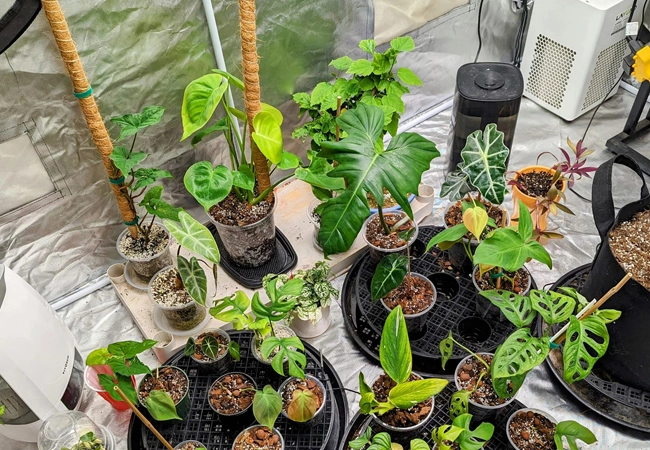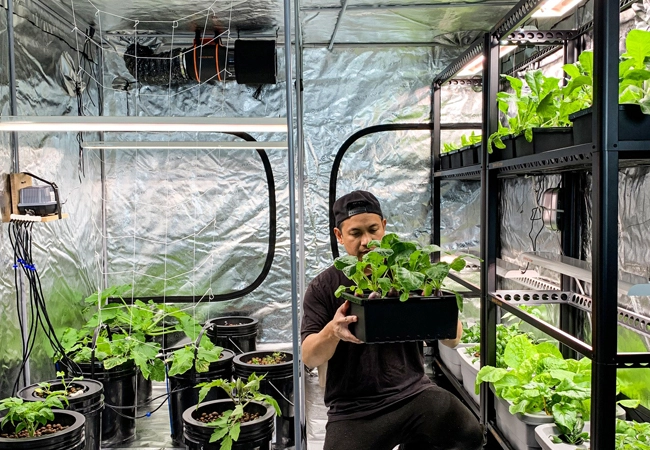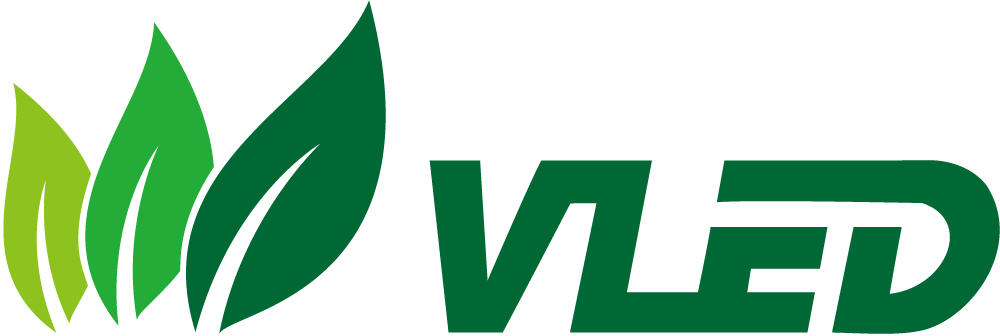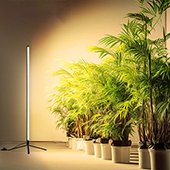Menu
What Size LED Grow Light Do I Need?
Are you planning to engage in indoor gardening? Picture rows of lush vegetables and exotic herbs bathed in the gentle glow of LED grow lights, breaking free from the confines of city living. That’s the magic of indoor gardening, and LED grow lights are the modern Merlin, casting their illuminating spell.
Some beginners may ask: what size LED light for a 2×2 grow tent, what size LED grow light for a 5×5 tent, or what size of LED light would I need to grow 4 cannabis plants?
Whether you’re a seasoned commercial grower aiming for a bountiful harvest or a home gardener yearning for lush greenery, choosing the right size of LED grow light is the cornerstone of success.
Choosing the wrong size is like giving your plants a dim flashlight instead of basking them in starlight – they may survive, but they won’t truly thrive.
In this blog, we’ll walk you through everything you need to know about selecting the perfect LED grow light size for your indoor garden, including factors to consider, how to calculate the right size and tips for maximizing your plants’ growth potential.
Table of Contents
Narrowing Down Your Options in 3 Steps
Faced with a variety of LED grow light specifications, choosing the right one is like navigating through a jungle.
To be honest, it all comes down to the size of your growing space, the quality of the light, and their rated values/spectra, and also depends on the types of plants, their light preferences, and the light needed during different growth stages. So, let’s narrow down your options through 3 steps.
Plant Species and Their Lighting Requirements
When selecting the appropriate size for an LED grow light, the type of cultivated plants and their light requirements are crucial factors.
Different plant species require varying amounts of light to achieve optimal growth conditions. Sun-loving plants, for example, require more intense light compared to foliage plants and herbs such as basil.
DLI for Plants
DLI, or Daily Light Integral, is a measurement of the total amount of light a plant receives in a day. It is typically used to ensure that plants receive an adequate amount of light to avoid underexposure or overexposure. Here, we list the DLI for common plants.
Plant Species | DLI (mol/m²/day) |
Cannabis | 40-60 |
Peppers | 30-45 |
Tomatoes | 25-45 |
Succulents | 30-50 |
Basil | 18-29 |
Thyme | 12-15 |
Mint | 10-16 |
Plant Species | DLI (mol/m²/day) |
Cilantro | 12-15 |
Lettuce | 10-17 |
Spinach | 14-18 |
Kale | 15-25 |
Petunias | 12-16 |
Cucumber | 20-35 |
Pansies | 12-18 |
How to Calculate DLI Based on Provided PPFD Metrics?
LED grow light suppliers always provide the PPFD (Photosynthetic Photon Flux Density) metric in their LED specifications as evidence of their fixture’s performance. We can perform some simple calculations and measure the DLI to determine if the light meets the illumination requirements.
To calculate DLI based on the provided PPFD metrics, you need to know the amount of PPFD emitted by your LED grow light and the daily lighting duration for your plants.
Here’s a straightforward formula:
[PPFD] x [Everyday Lighting Hours] x 3600 seconds ÷ 1,000,000 = DLI mol/m²/day
Therefore, to calculate how much PPFD you need to obtain from the fixture, use the following formula:
[DLI] x 1,000,000 ÷ 3600 ÷ [Everyday Lighting Hours] = [PPFD]
E.G.: [60 mol/m²/day] x 1,000,000 ÷ 3600 s ÷ [18 h] = 925.9 μmol/m²/s
If your plants require a DLI of 60 mol/m²/day, and your lighting schedule is 18 hours, you would need an LED grow light that produces at least 925.9 μmol/m²/s of PPFD.
For Seedlings, Vegetables, Flowering, or Full-cycle Growth?
The provided DLI above offers a general range for illumination needs. However, the growth stage of plants also influences the required PPFD (or DLI). Even if you’re cultivating the same plant variety, their lighting needs may vary based on their growth stage.
Too much or too little light can be detrimental to plants. For the healthy growth of indoor plants, it’s essential to specify the PPFD (or DLI) for each growth stage. Since many manufacturers commonly display PPFD figures, using PPFD is more convenient.
We are here to provide only a brief list rather than a detailed explanation.
Seedling Stage | Vegetative Stage | Flowering Stage | |
Weed Plants | 100-300 μmol/m²/s | 400-600 μmol/m²/s | 800-1000 μmol/m²/s |
Cucumbers and Tomatoes | 100-200 μmol/m²/s | 200-500 μmol/m²/s | 500-800 μmol/m²/s |
Peppers and Other Flowering Plants | 100-300 μmol/m²/s | 300-600 μmol/m²/s | 600-750 μmol/m²/s |
Lettuce and Herbs | 100 μmol/m²/s | 100-250 μmol/m²/s | / |
The Size and Shape of the Growing Area are Crucial
When selecting the appropriate size for LED grow lights, it’s crucial to consider the size and shape of the growing area.
The size of the growing area will determine the number of LED lights needed, while the shape will dictate the distribution of light coverage. A larger growing area will require more LED lights to ensure sufficient light penetration and uniformity.
The shape of the growing area also affects the distribution of light coverage since some LED lights may provide a more concentrated beam angle, while others may have a wider spread range.
If you’re using a grow tent, it’s crucial to have the coverage area of LED grow lights match the size of the tent. However, if your plants require less light, it is advisable to use grow lights that cover at least 75% of the tent’s surface area to ensure optimal plant growth and cost-effectiveness.
Additionally, consider the height of the plants in the growing area, as taller plants may require stronger light and higher-wattage LED grow lights to ensure normal growth and development.


What Size LED Grow Light Do I Need?
After completing the above three steps, you have confirmed the essential information you need about the LED lighting fixture.
How Many Watts Per Square Foot for LED Grow Lights?
Most people believe they need a certain wattage for their growing area. While wattage can provide a rough approximation of LED coverage, it’s not highly accurate.
Coverage is influenced by other factors, including the efficiency of the LED and its beam angle. That being said, if you’re an amateur enthusiast growing in a tent or other confined space, you can safely use wattage to give you a rough idea of the appropriate LED grow light coverage for your area.
Here’s our quick guide for determining how LED grow light wattage matches up with the square footage of your growing space or tent:
- Vegetative growth: 20 watts per square foot.
- Flowering: 30 watts per square foot.
In the table below, you can adjust the wattage up or down (+/-) by 10%, and still get a properly sized LED grow light.
For example, looking at the 4′ x 4′ row, we can see the power for flowering is 480 watts. If decreased by 10%, it would be 432 watts; if increased by 10%, it would be 528 watts. Any wattage within this range would work well.
Grow Room Size | Square Feet | Veg Wattage | Flower Wattage |
1′ x 1′ | 1 | 20 watts | 30 watts |
2′ x 2′ | 4 | 80 watts | 120 watts |
3′ x 3′ | 9 | 180 watts | 270 watts |
2′ x 4′ | 8 | 160 watts | 240 watts |
4′ x 4′ | 16 | 320 watts | 480 watts |
5′ x 5′ | 25 | 500 watts | 750 watts |
6′ x 6′ | 36 | 720 watts | 1,080 watts |
4′ x 8′ | 32 | 640 watts | 960 watts |
8′ x 8′ | 64 | 1,280 watts | 1,920 watts |
10′ x 10′ | 100 | 2,000 watts | 3,000 watts |
How Many Plants Per LED Grow Light?
A common question often asked by new growers is: how many plants per LED grow light? This isn’t the right question to ask.
Assuming you have a 4′ x 4′ grow tent with a 480-watt LED grow light, you can comfortably grow anywhere from 1 to 9 small plants. Some growers also prefer cultivating only one or two large plants under each light, and that’s perfectly fine.
It’s essential to note whether the size of your LED grow light is suitable for the growing area, as briefly outlined in the table above.
A common mistake made by novice growers is the desire to fill the growing area as much as possible, not wasting any space. Do you find yourself doing the same? When plants need to flower, they will grow into each other, potentially leading to reduced yields. Plants require sufficient space to branch out and thrive.
For more guidance on how many plants to grow in a given growing space under LED lights, please refer to the reference table below.
Grow Room Size | Square Feet | Recommended # of Plants in Veg | Recmommended # of Plants in Flower |
1′ x 1′ | 1 | Up to 2 | 1 |
2′ x 2′ | 4 | Up to 4 | Up to 2 |
3′ x 3′ | 9 | Up to 9 | Up to 5 |
2′ x 4′ | 8 | Up to 8 | Up to 5 |
4′ x 4′ | 16 | Up to 16 | Up to 9 |
5′ x 5′ | 25 | Up to 25 | Up to 12 |
6′ x 6′ | 36 | Up to 36 | Up to 20 |
4′ x 8′ | 32 | Up to 32 | Up to 18 |
8′ x 8′ | 64 | Up to 64 | Up to 36 |
10′ x 10′ | 100 | Up to 100 | Up to 48 |
Choosing Plant Light Types
Now that you know the theoretical knowledge behind selecting plant light sizes, I will recommend a few for your reference.
- UFO grow light: Suitable for planting crops, including tomatoes, strawberries, flowers, and other vegetables and fruits.
- Quantum board grow light: Ideal for seedlings, flowers, cannabis plants, ornamentals, and other vegetables and fruits.
- Bar-style LED grow light: Perfect for growing weed. Multiple bars and single light bar options are available.
Even if you stick to the most direct strategy of matching the grow light size with the size of your grow tent, you can still achieve impressive yields.
Keeping it simple yields the best results, especially when starting. Indoor cultivation of vegetables, fruits, or cannabis is all about constant evolution and experimentation. You can add lights, upgrade fixtures, and gradually increase yields with each harvest.
Get in touch with us!
From custom light planning, to tailored quotes, and everything in between, our team of horticulture experts are always ready to assist.




